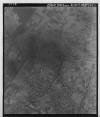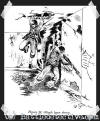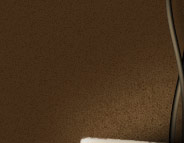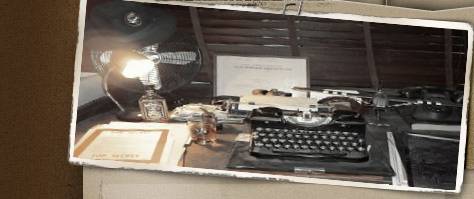|
1) From: Field Manual
FM-31-30: "74.
MISCELLANEOUS, a. Looting.
Built-up areas offer many
opportunities for looting. The
acquisition of loot is likely to
lead to
the discarding of equipment,
with a resultant loss of efficiency.
However well disciplined a unit may
be, unless precautions are taken in
advance, looting will begin on a
small scale and tend to increase. It
deteriorates the soldier, detracts
from alertness, slows initiative,
and may seriously interfere with the
progress of the attack. All leaders
must see that instructions against
looting are obeyed, and that
violations are promptly and properly
punished."
Collecting Nazi souvenirs does not
necessarily constitute looting, but
the effects are comparable with
those described above. Compare this
with the photographs of troopers
with Nazi souvenirs and also
civilian items.
2) From: Field Manual
FM-31-30: "74.
MISCELLANEOUS, b Civilian control.
The problems of controlling and
administering the civilian
inhabitants will nearly always
arise, and may be complicated by a
flow of refugees into built-up
areas. The degree of assistance and
cooperation that may be expected
from the civilian inhabitants will a
vary greatly. At one extreme is the
full cooperation of inhabitants in
friendly territory. In some
enemy-occupied countries there will
be both friendly and unfriendly
elements. Within an enemy country
itself, the population will
inevitably be hostile and little in
the way of cooperation may be
expected, but maximum assistance
should be obtained from any elements
that are friendly. Spies and fifth
columnists must be ceaselessly
sought out and mercilessly dealt
with. Arrangements are made for
sudden unforeseen movement either
into an area or out of it. Bombing
tends to drive the inhabitants out
of a town, while the ground action
that follows on the outskirts will
drive them in again.
Compare this with this account in
"Hell's Highway" by George Koskimaki:
"T/4 Donald G. Malarkey's
recollection of the advance by the
2nd Battalion is as follows: "We
came into the city from the
northeast with scattered resistance
but rounded up a lot of prisoners on
tips from the Dutch people. In fact,
at one time, we had so many men
going after holed-up Germans that we
had to stop following their leads."
T/5 Charlie McCallister had been
relieved of the burden of carrying a
heavy SCR-300 radio and was
functioning as a rifleman. a Dutch
civilian came out of a house as I
was going by and motioned me to
follow him inside. I did so, and he
led me to the kitchen in the back of
the house, and as I entered I was
facing five German soldiers, but
they had stacked their weapons
against the wall and raised their
hands and surrendered when I walked
in. I liberated one pistol and told
the Dutchman to get the rest of the
arms for the resistance people and
then marched the Germans out into
the street where they were quickly
taken over by some of the other
Dutch resistance folks. I hope my
prisoners survived because the Dutch
were really mad."
3) From: Field Manual
FM-31-30: "74.
MISCELLANEOUS, c.
Prisoners. The handling of
prisoners of war is normal but
should be prompt. Leading units must
not permit an accumulation of
prisoners to interfere with their
progress.
...
4) From: Field Manual
FM-31-30: "75. PLANS, a.
Intelligence. Plans are based
upon the best intelligence
available. Suggested sources of
information are-
(1) Standard travel publications
such as guide books, road maps, city
maps, industrial reports,
newspapers, and magazines.
Compare this with the map that was
issued to paratroopers of the 101st
when they entered Eindhoven:

The samples of the 1944 map of
Eindhoven were taken from the map
that we obtained through
curator
McCabe of the
Ohio University Library,
Archives & Special Collections. The
Ohio University's Library owns the
research material of author
Cornelius Ryan for his book A Bridge
Too Far.
It is our theory that the 1944 map
was made from an Eindhoven city map
of the late 1920's. Through the
Municipality of Eindhoven, Housing
Department, we received a copy of a
city map of 1926. We discovered some
minor differences that leads us to
believe the War Department used a
map of 1927 or 1928. Of interest are
the details the War Department's map
makers have added on the army map.
Some Dutch terminologies were
translated and the strategic Philips
factories were added.
The map that the paratroopers had,
by the way, was obsolete by the time
they entered Eindhoven. Eyewitness
Jan van Hout, 15 at the time, had
indicated German positions on the
map to the paratroopers. To his
amazement, streets in his own
neighborhood Tivoli (built in the
late 1920's and the 1930's) weren't
on the map. It didn't keep the
paratroopers from capturing
Eindhoven, however.
5) From: Field Manual FM-31-30: "75. PLANS, a.
Intelligence.
[...]
(2) Special summaries obtained
through normal intelligence
channels.
(3) Information from local
inhabitants regarding hostile
activities and dispositions and
recent changes that have occurred in
structures within the area of
interest.
(4) Aerial reconnaissance, aerial
photographs, and maps.
The planners of Operation Market
Garden only had 10 days to prepare
for the operation. But they could
make use of the intelligence
gathered for previous plans of the
First Allied Airborne Army which
were cancelled. Also the Allies had
gathered intelligence on Holland on
a regular basis in the pre-invasion
period. An example is this aerial
photograph of the city taken on the
21st of October 1943. It shows the
main route of advance of the 506th
Regiment on September 18th 1944:

(Note
that this is a large sized document
of approx. 34Mb)
6) From: Field Manual
FM-31-30: "78. PLANS FOR PHASE II:
[a to..] b. The assignment of
relatively narrow frontages to
leading battalion (s). [...] d.
If the operation entails a
considerable advance, the regiment
will usually be disposed initially
in column of battalions."
Compare this with the Action Report
of the 506th Regiment: "D-Day
plus 1“ 18 September 1944
During the night orders were
received from Division to pro-ceed
on the original mission of Seizing
EINDHOVEN at 1st light.[...] the
regiment started its move to
EINDHOVEN at 0600 in the order 3rd
Bn, 2nd Bn, Regtl Hq and Hq Co, 1st
Bn."
7) From: Field Manual FM-31-30: "78.
PLANS FOR PHASE II: [a to..]
e. A large portion of supporting
weapons will ordinarily be attached
to battalions. The determining
factor in the decision will be
whether control and close support
can best be obtained by such
attachment. Steps must be taken to
insure that the attached weapons are
provided with close-in infantry
protection."
and
"80. EMPLOYMENT OF SUPPORTING
UNITS, a. Antitank and cannon
weapons. Available antitank weapons
are emplaced to cover streets from
which mechanized counterattack
appears probable. Some or all of the
battalion antitank guns may be
attached to leading rifle companies
for direct-fire missions against
fortified positions or buildings in
addition to antitank missions. One
or more platoons of the antitank
company may be attached to
battalions."
Compare this with this account in
"Hell's Highway" by George Koskimaki:
"Sgt. Jack MacLean of the
Anti-tank platoon wrote: "Company
"I" started the assault down the
left side of the road going toward Eindhoven and ran into some 88s that
were mobile. We again heard "Bazookas up
front!"[...] We ran
into a couple machine gun
emplacements and a couple riflemen.
We fired e few rounds and were able
to catch one 88 backing into an
alley. We put three rounds into it,
destroying it and killing the crew."
8) From: Field Manual FM-31-30: "78.
PLANS FOR PHASE II: [a to..]
f. Reserves will ordinarily have
little opportunity to maneuver
within the regimental zone of
action. Their primary missions will
be to repel counterattacks and to
mop up hostile resistance which has
been bypassed by forward elements.
They may also be used to maneuver
through the zone of an adjacent unit
which has advanced more rapidly, for
the purpose of striking in flank
resistance which is holding up the
attack of the regiment."
Compare this with the Action Report
of the 506th Regiment: "The 3rd
Bn proceeded down the main road
overcoming scattered resistance on
the way. This movement proceeded
orderly and rapidly to WOENSEL on
the outskirts of EINDHOVEN where the
3rd Bn was held up by small arms and
dual purpose gun fire at 0900. The
attack seemed to bog down, so at
1000 the 2nd Bn was committed with
the mission of moving around the 3rd
Bn's left flank and into EINDHOVEN
with the 3rd Bn."
9) From: Field Manual FM-31-30: "78.
PLANS FOR PHASE II: [a to..]
l.l. The infantry regimental
commander must take special steps to
maintain communication with
subordinate adjacent units. Although
the commander will usually be close
in rear of the attacking units, he
must rely to a considerable extent
on liaison officers to keep him
informed and maintain lateral
communication. These liaison
officers will be fairly close to
their own units as far as actual
distance goes, but may have
difficulty in communicating due to
dead spaces in radio and severed
wire lines. They must therefore be
accompanied by a sufficient number
of messengers to transmit their
reports and information."
Compare this with these pictures.
The first one shows Colonel Sink,
Regimental Commanding Officer in his
temporary Command Post on
Vlokhovense Weg. This picture was
taken at approximately1000 on
September 18th 1944. Shortly after
this picture was taken, the two
German 88mm guns on Woenselse Straat
were taken out and in photo 2 we see
the Colonel marching towards the
center of Eindhoven on Frankrijk
Straat, following the assault troops
into town. On the third picture we
see Major Oliver Horton of 3rd Bn/506
and Captain Harwick of "H"Co./506
walking into the center of
Eindhoven. The Company Commander
followed by the Battalion Commander
by just a step.
10) From: Field Manual FM-31-30: "79.
PLAN OF ATTACK, a. Formation
[...]:(2) When the width of the
battalion zone exceeds two blocks,
two rifle companies are usually
assigned to the attacking echelon."
Compare this with the report Col.
S.L.A.Marshall and Capt. John G.
Westover wrote about the capture of
Eindhoven: "The hour was 0730 and
3rd Battalion crossed the LD at Bokt
with "H" and "I" astride the road
and "G" and "HQ" going straight down
the road. The country was flat and
even and the two companies which
were covering the regimental front
were able to cover the fields and
ditches at almost a marching pace."
11) From: Field Manual FM-31-50: "89.
CONDUCT OF ATTACK [a to..] f.
Cover must be selected in advance.
It is too late to select cover when
being fired upon. Hug walls and move
rapidly from cover to cover. Quickly
roll over roof tops and walls. Do
not go over them upright. (See fig.
22.)

Compare this with this account in
"Hell's Highway" by George Koskimaki:
“In another area, Sgt. Charles
Jacobs jumped up, rolled over a
brick fence, surprised three Germans
moving to an 88 gun position, and
took them prisoners. Other Germans
disabled that second gun."
The individual must be trained to
fire around the right-hand side of
cover from the right shoulder and
around the left-hand side from the
left shoulder, as he exposes less of
the body in that way. (See fig. 23.)

Compare this with this account in "Rendez-vous
with Destiny" by Leonard Rapport&
Arthur Northwood: "At the same
time, the grenadier with the 2d
squad, Smith, fired from a position
on Woenselsche Straat only
seventy-five yards from the gun. To
keep under cover he had to fire from
his left shoulder. But his second
round was a direct hit."
He avoids, if possible, firing over
the top of cover unless the firer's
silhouette will blend with his
background.
[...]
12) From: Field Manual FM-31-50: "89.
CONDUCT OF ATTACK [a to..] l.
Entrance through the upper part of a
building is better if it is
possible, because it is much easier
to work down than up. (See fig. 25.)
Also, when the enemy is forced down
to the ground level he may be
tempted to withdraw from the
building and expose himself to the
fire covering units or machine
guns."

Compare this with "A"-Co./ 506th's
actions in Eindhoven in: "The Road
to Arnhem" by Donald R. Burgett: "We
entered a large, tall building and
began a systematic search of rooms
and offices, floor by floor. We went
up the stairs slowly, craning our
necks to look up. It was a dangerous
position. If there was anyone on the
stairs and landings above they could
shoot downward or drop grenades.
Where do you hide from a grenade on
a stairway? [...]
We finally made it
to the top and went to the windows
to survey the city around us. While
there we discussed which of the
surrounding buildings to search
next, and then the next, and so on,
working our way back toward the area
where the rest of our regiment was.
While we were
talking, Speer laughingly looked
back to see if we were watching and
then made a big show of pushing a
button alongside the elevator door.
There came an immediate rumbling,
grinding noise of protest from
somewhere deep inside the walls. A
few moments later a light came on
and we all trained our weapons on
the door as Speer cautiously opened
it. There stood an empty elevator,
waiting our use. The electricity was
still on in the city. The elevators
worked. We stood there dumbfounded,
looking first at each other, then at
the elevator. Someone said, "Why
not?" With a rush we all piled in
and someone pushed the button for
the first floor.
As we neared the
first floor I remember thinking that
it didn't seem like such a good idea
after all. Anyone standing outside
in the lobby could see that the
elevator was coming down and would
be waiting. We, on the other hand,
could not see if there were any
Germans waiting for us with their
weapons at the ready. We all raised
our weapons to our shoulders and
waited. Finally, the door slid open.
The lobby was empty. It was suddenly
a great idea again.
We ran to each
building in turn. If it had an
elevator, we would take it to the
top floor then search the building
from top to bottom. We would
cautiously get out on the top floor
and begin our descent, room by room,
office by office, floor by floor,
all the way to the basement if the
building had one. It was a hell of a
lot easier than walking up all those
stairs. Building by building we made
our way back, arriving at our
company command post (CP) a lot
earlier than expected. Lieutenant
Muir asked if we had covered all the
buildings. [...] We told
him that the electricity was still
on - something none of us had
thought of - and that we had taken
the elevators to the top floor of
each building and searched on the
way down. He just shook his head and
smiled."
13) From: Field Manual FM-31-50: "89.
CONDUCT OF ATTACK [a to..] j.
House-to-house fighting lends itself
to surprise situations. The object
is not only to avoid being surprised
but to surprise and annihilate the
enemy. Every effort is made to
create and take advantage of
diversions which temporarily
distract the enemy's attention [...]
and
p. If there is reason to
believe that an armed enemy occupies
a room, it is suicidal to rush into
that room without first killing or
disabling him. It is much safer to
breach a small opening and toss a
grenade inside. In entering a room
believed to be occupied by the
enemy, the attackers must work in
pairs, using the "buddy" system,
with each man alternately covering
his buddy's movements. In this
system, one man throws the grenade
into the room. The other rushes in
immediately after the
explosion[...]."
Compare this with this account in
"Hell's Highway" by George Koskimaki:
"PFC Joseph Harris of "H " Company
recalled a buddy who was great in
house-to-house fighting. Harris
wrote: "We had a little fellow we
called "Tarky", the best little
house-to-house fighter you ever saw“ a great little scout, too. He had
a dummy grenade and he'd throw the
grenade in the window and he'd
follow it. He cleaned those places
out in a hurry and Sergeant (Frank
J.) Padisak would say,"Wherever I
go, Tarky, you follow me. You're the
man I want with me in this
house-to-house business." |













